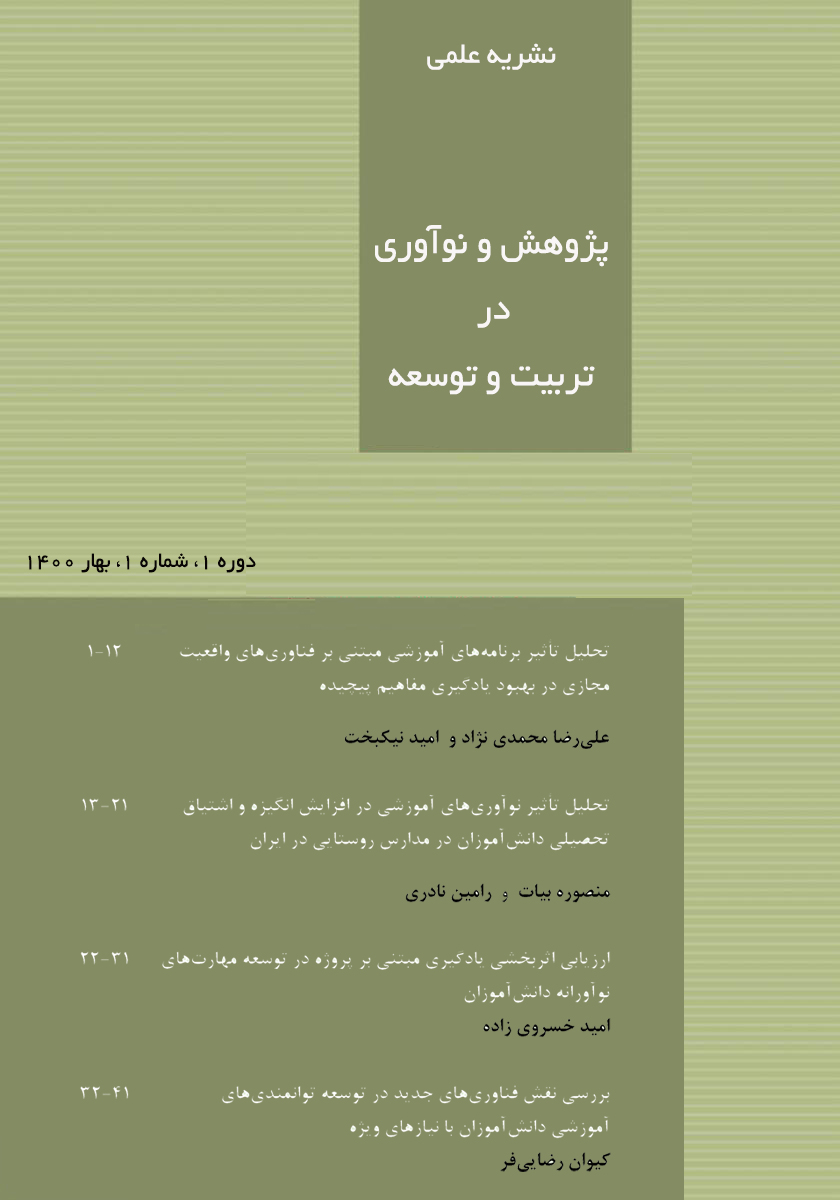Providing a Structural Model of Administrative Standards for Educational Leaders in Schools
Keywords:
Administrative Standards, Educational Leaders, Structural ModelAbstract
The aim of the present study was to provide a structural model of administrative standards for educational leaders in schools. The research method employed in this study was correlational and used structural equation modeling (SEM). In the first stage, the statistical population included all teachers in Dhi Qar province, specifically in Al-Rifai city. From this population, 384 individuals were selected using a multi-stage stratified random sampling method. The required data were collected using a researcher-developed questionnaire, designed based on qualitative data (a qualitative model derived from research) and analytical comparisons with theoretical foundations and the research literature. The validity of the questionnaire was confirmed through face and content validity, relying on expert opinions, as well as construct validity through exploratory factor analysis. Reliability was assessed using Cronbach's alpha via the parallel method. Data analysis was conducted using structural equation modeling with the PLS software. Based on the provided estimates, it can be concluded that the examined model demonstrated relatively good and acceptable fit within the target population. Therefore, the research model's results indicate that the model used in the current study had appropriate fit. This study emphasizes that educational leadership, as an independent domain, must align with the goals of education and play a key role in improving the quality and productivity of the educational system. Developing clear and effective administrative standards for educational leaders is essential to enable them to play a significant role in enhancing educational quality. It is recommended that policymakers and educational planners consider these results and take steps toward improving these standards.
Downloads
References
MacKinnon GR, Young D, Paish S, LeBel S. Preparing Instructional Leaders: Evaluating a Regional Program to
Gauge Perceived Effectiveness. International Journal of Education Policy and Leadership. 2019;14(1). doi:
22230/ijepl.2019v14n1a866.
Por Jafari shir Joposht M, Shakibaei Z, Zarei H. `Provide a Model for Parents' Educational Assistance to Empower
Online Education in Critical Situations. Sociology of Education. 2024;10(1):31-44. doi: 10.22034/ijes.2023.2006736.1434.
Bezi A, Fakoori H, Bayani AA, Saemi H. Design and Validation of an Environmental Education Curriculum Model
for Higher Education Based on the "Aker" Approach. Iranian Journal of Educational Sociology. 2024;7(1):79-90. doi:
61838/kman.ijes.7.1.8.
Golabchi H, Kiaee M, Kameli MJ. Designing a Superior Service Delivery Model in Education to Enhance Public
Satisfaction. Iranian Journal of Educational Sociology. 2024;7(1):189-97. doi: 10.61838/kman.ijes.7.1.18.
Herawati N, Jafari M, Sanders K. Teachers' Perceptions of the Efficacy of Positive Behavior Support Systems.
International Journal of Education and Cognitive Sciences. 2024;5(2):8-15. doi: 10.61838/kman.ijeas.5.2.2.
Abdollahpour MA. Psychometric Properties of the Short Character Strength Measure (SCSM) among Iranian
Teachers. Sociology of Education. 2024;10(1):377-89. doi: 10.22034/ijes.2023.2009240.1452.
Alaei F, Ahghar G, Fathi Vernosfaderani L. Identification and Explanation of Organizational Health Dimensions and
Components among Middle School Teachers in Tehran. iase-idje. 2024;7(2):36-42. doi: 10.61838/kman.ijes.7.2.5.
Şahin A, Soylu D, Jafari M. Professional Development Needs of Teachers in Rural Schools. Iranian Journal of
Educational Sociology. 2024;7(1):219-25. doi: 10.61838/kman.ijes.7.1.22.
Salman Al-Oda AH, Sadeghi M, Al-Murshidi RHA, Sharifi S. Investigating the Relationship Between Talent
Management Implementation Categories in the Basra Province Education Organization. Iranian Journal of Educational
Sociology. 2024;7(1):1-9. doi: 10.61838/kman.ijes.7.1.1.
Clement M. Why Combatting Teachers' Stress is Everyone's Job. The Clearing House: A Journal of Educational
Strategies, Issues and Ideas. 2017;90(4):135-8. doi: 10.1080/00098655.2017.1323519.
Jafari S, Amin Bidokhti AA, Ghasemian Dastjerdi Z. The Role of Professional Leadership of Principals in Developing
Students' Competence Mediated by Trust and Collaboration Among Teachers and Teacher Professionalism. Educational
Sciences Quarterly. 2019;1(26):77-96.
Robert K, Craig A, Brierton J, Tomal D. Superintendent Core Competencies of School Leadershipes. Lutheran
Education Journal. 2018;3(9):33.
Gutek G. Philosophical Schools and Educational Theories. Tehran: SAMT Publications; 2017.
Khoobchehreh M, Akbari A, Pourshafiee H, Cherabin M. Identification and Prioritization of Dimensions and
Components of Standard Education. Educational Leadership and Management Quarterly. 2019;13(2):87-110.
Khoobchehreh M, Akbari A, Pourshafiee H, Cherabin M. Presentation and Explanation of Standard Education Model.
Journal of Advances in Psychology, Educational Sciences, and Education. 2021;4(38).
Keshtvarz Kandazi E, Eghbalian Noorani Zadeh P. Investigating the Role of Farhangian University in Training
Creative Teachers Considering Higher-Level Documents. Psychological and Educational Sciences Studies. 2018(36):107-21.
Mohammadi M, Gholamhossein M, editors. The Mission of Farhangian University in Training Competent Teachers.
Proceedings of the Second National Conference on Teacher Training; 2016; Isfahan: Farhangian University, Isfahan University.
Ghahramani Fard K, Abbaszadeh M. Designing and Validating a Native Model of Professional Standards for
Secondary School Teachers: A Mixed-Methods Study Using Delphi Technique. Educational and School Studies Quarterly.
;4(2):27-50.
Valedi Alashti H, Khatir Pasha K, Taghavi Yazdi M. The Role of Farhangian University in Training Thoughtful
Teachers with a Research-Oriented Approach: A Proposed Model. Jundi Shapur Educational Development Quarterly.
;12(0):361-74.

Downloads
Published
Submitted
Revised
Accepted
Issue
Section
License
Copyright (c) 2024 Journal of Study and Innovation in Education and Development

This work is licensed under a Creative Commons Attribution-NonCommercial 4.0 International License.










